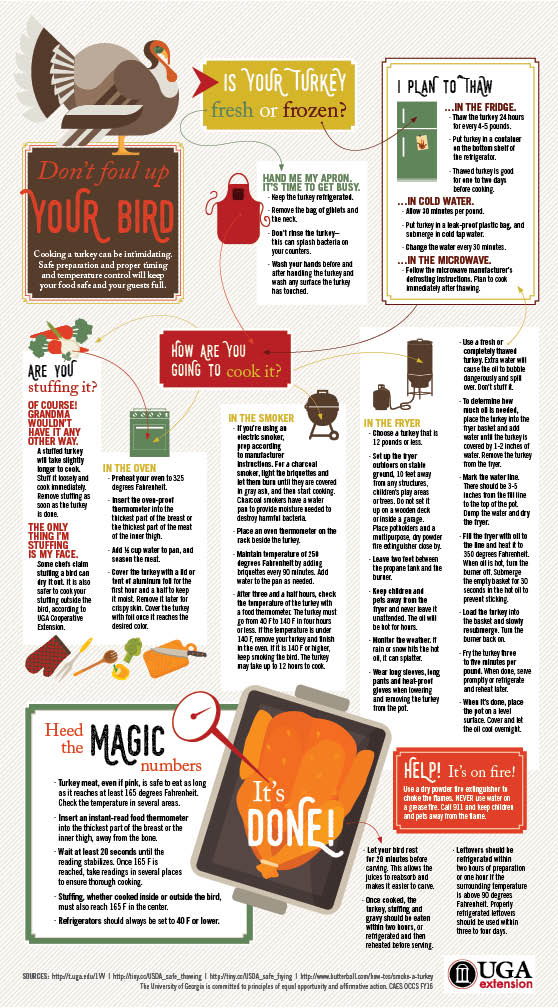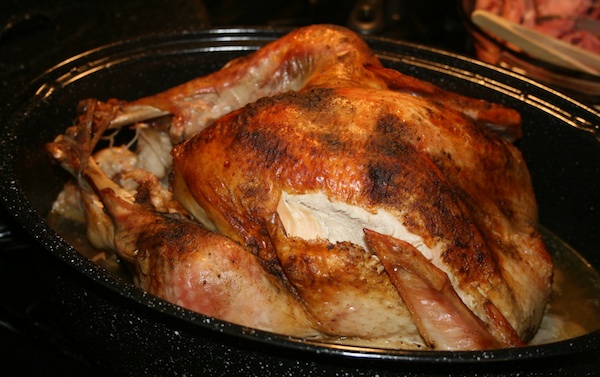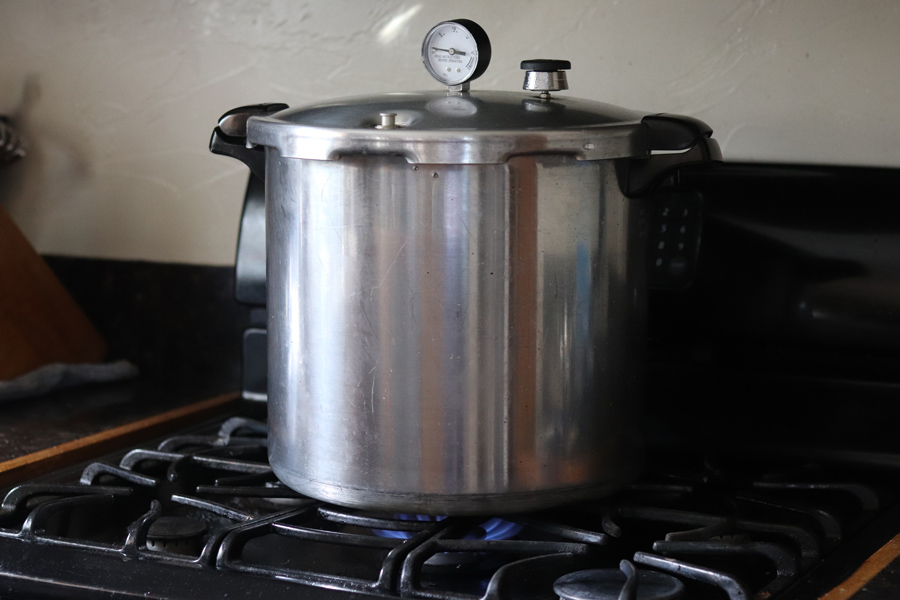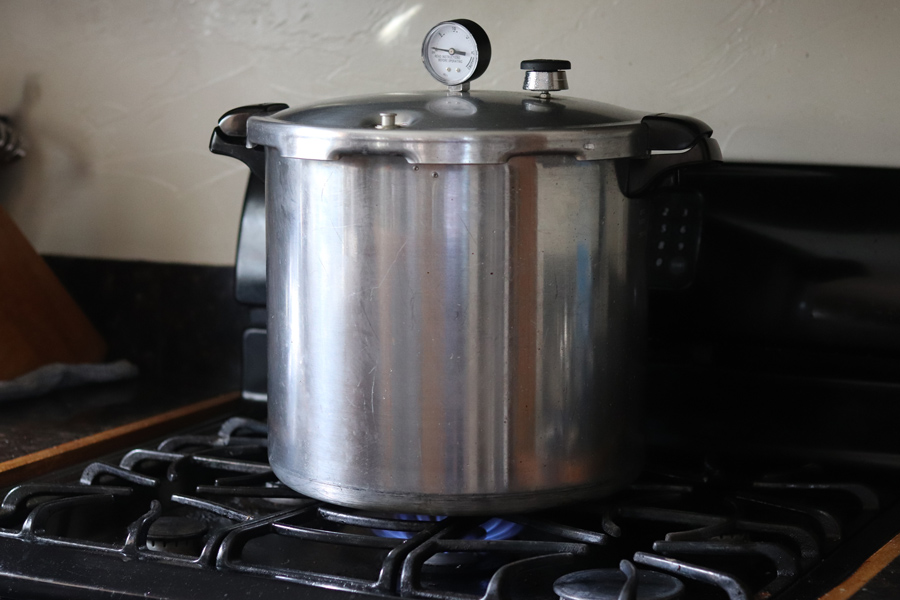It’s time for turkey again, and you are probably planning your trip to the grocery store to purchase one to feed your family this holiday. Now comes the tricky part: making a tasty turkey while combating bacteria and other foodborne pathogens.
Cooking a turkey safely begins with proper thawing. Using unsafe thawing techniques and underestimating thawing time are common mistakes made by new cooks. The safest and most recommended method to thaw turkey is to leave it in the refrigerator. Leaving items out on the counter or in the sink is not a proper way to thaw.
In the past, my family has been guilty of this. Following safe food practices are crucial, especially around the holidays when serving high-risk populations, such as pregnant women, grandparents and children. Thawing a turkey in the refrigerator can take up to 24 hours for every 5 pounds of turkey. A very large turkey can take more than two days to thaw. It is essential to plan ahead, unless you plan to buy fresh bird a few days before Thanksgiving.
My family once woke up to find a frozen turkey just minutes before we planned to watch the Macy’s Thanksgiving Day Parade. If this happens, thaw the turkey in cold water or in the microwave. If you choose to thaw the turkey in cold water, make sure the turkey is wrapped tightly in leak-proof packaging, then put it into the cold water. The water should be changed every 30 minutes. If thawed in the microwave, the turkey must be cooked immediately.
Rookie chefs often leave the giblet bag in the turkey. Everyone in my family has done it, and I’m sure that it has happened to a few of you as well. When cleaning the turkey, be sure to reach all the way into the cavity to extract the giblets.
If you mistakenly leave the giblets in the turkey during cooking, remove them from the cooked turkey and carefully examine them. If they are wrapped in paper, then proceed to carving. However, if they were wrapped in plastic and there is evidence that the heat altered the state of the plastic, you should not eat the turkey or giblet items.
Before cooking, remove the hock lock, the device that secures the legs. Even though hock locks are most often made of heat-resistant materials, leaving them on during cooking can make it much more difficult to cook the bird evenly.
Now, for the million dollar question: How do you know when the turkey is cooked? Many seasoned chefs will have a different answer based on smell, look and time spent in the oven, but the only way to know whether your turkey has reached a safe internal cooking temperature – 165 degrees Fahrenheit – is by using a food thermometer. This will ensure that dangerous bacteria that cause foodborne illnesses have been destroyed. When checking the temperature of the turkey, place the food thermometer in the innermost part of the thigh and wing, and the thickest part of the breast. Personal preferences may call for cooking the turkey to higher temperatures, such as 180 F, to remove the pink appearance and rubbery texture.
The best way to have a successful and low-stress Thanksgiving, Christmas, New Year or any time you serve turkey, is to plan ahead. Plan what to cook and in what order to ensure that you don’t experience a traffic jam in the oven. Cook foods with longer cooking times first, and prep food as much as possible before the big day. Plan a menu and write down your grocery list to prevent going to the store at the last minute for items like butter or eggs. It is also OK to share the love and to assign dishes to various family members.
I wish you all the best of luck in preparing Thanksgiving dinner. Plan ahead, consider thawing and remember those giblets and cooking temperatures.





